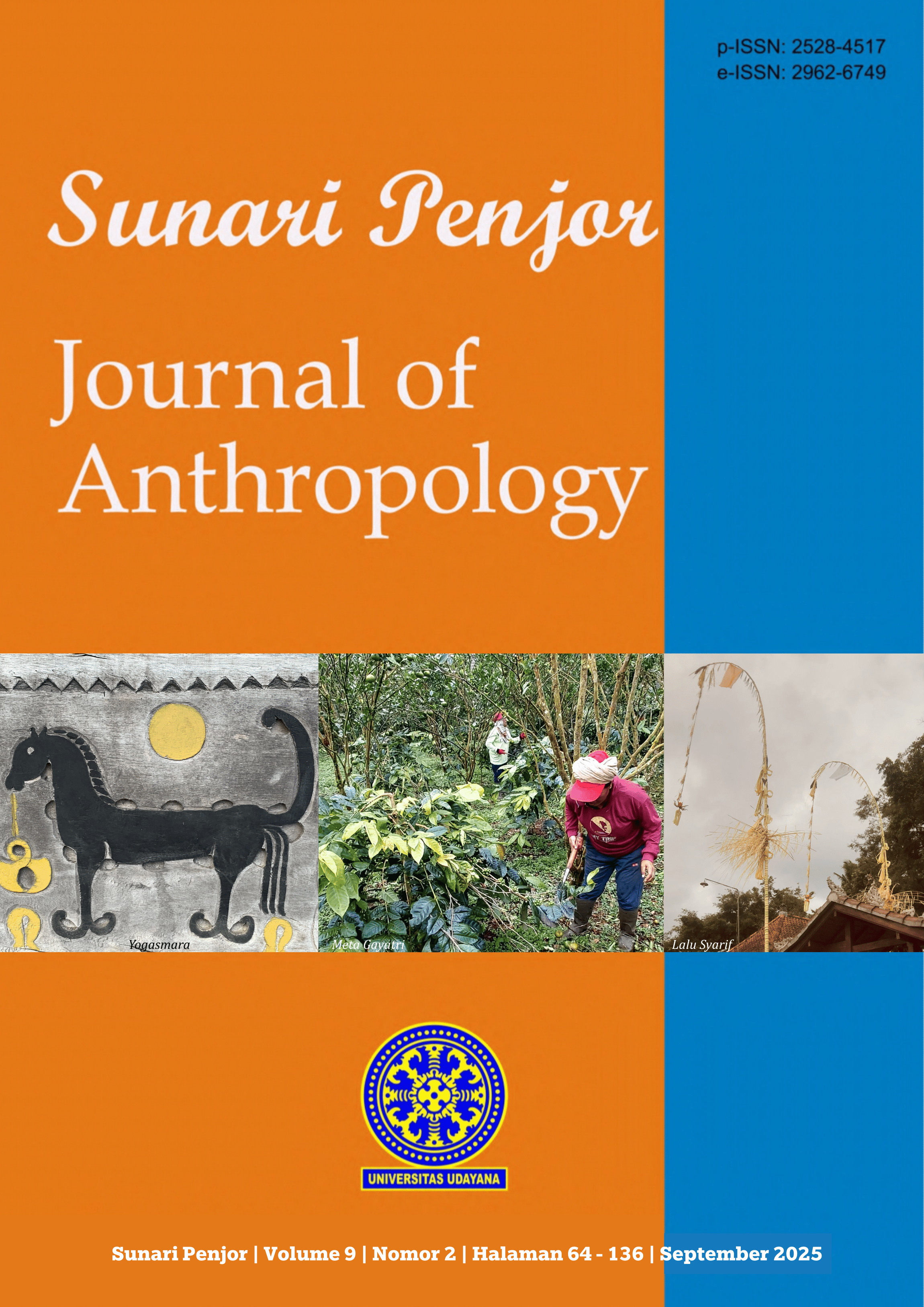Mekanisme Pembuatan Weti pada Sa'o di Kampung Adat Gurusina, Kabupaten Ngada, Nusa Tenggara Timur
DOI:
https://doi.org/10.24843/SP.2025.v9.i02.p04Keywords:
Lima Pade, Weti, Vernacular House, Sa’oAbstract
Weti on sa’o in Gurusina Traditional Village represents a cultural heritage rich in meaning, yet its continuity faces challenges due to the limited involvement of the younger generation. This study aims to document the mechanism of weti making while examining the symbolic, social, and spiritual values embedded within it. The research employed a qualitative method with an ethnographic approach, using observation, interviews, and literature study. The findings reveal that the carving process involves five pade (master carvers) who gain legitimacy through customary law and is accompanied by a series of rituals from material preparation to completion. Weti functions as a symbol of cosmology, collective identity, and social cohesion of the Gurusina community. The practices of mutual cooperation and regular maintenance demonstrate a balance between cultural preservation and adaptation to modernity. Thus, weti plays a crucial role as a medium for transmitting values and safeguarding the cultural continuity of Gurusina.












